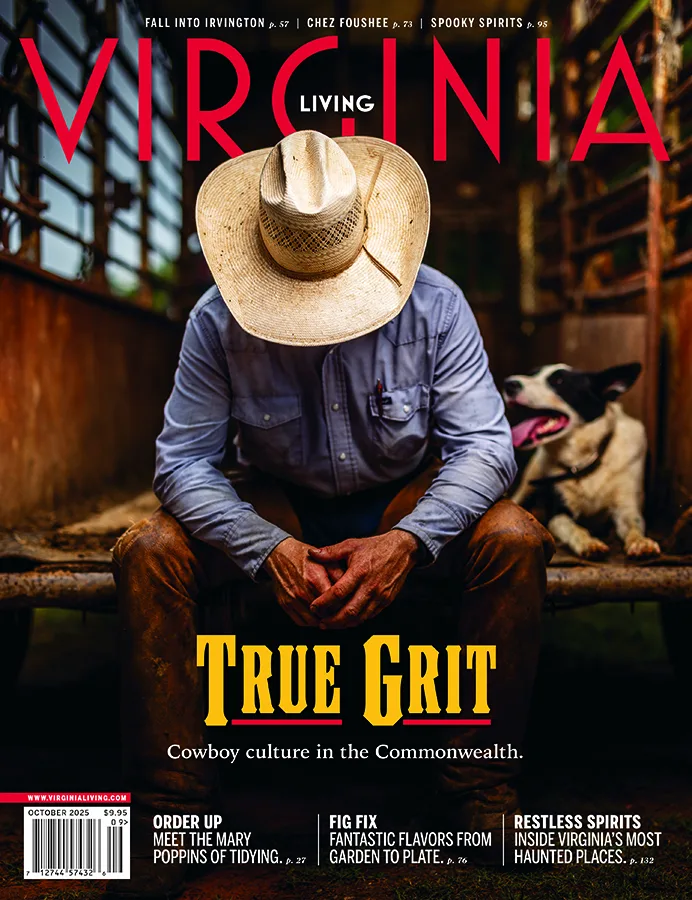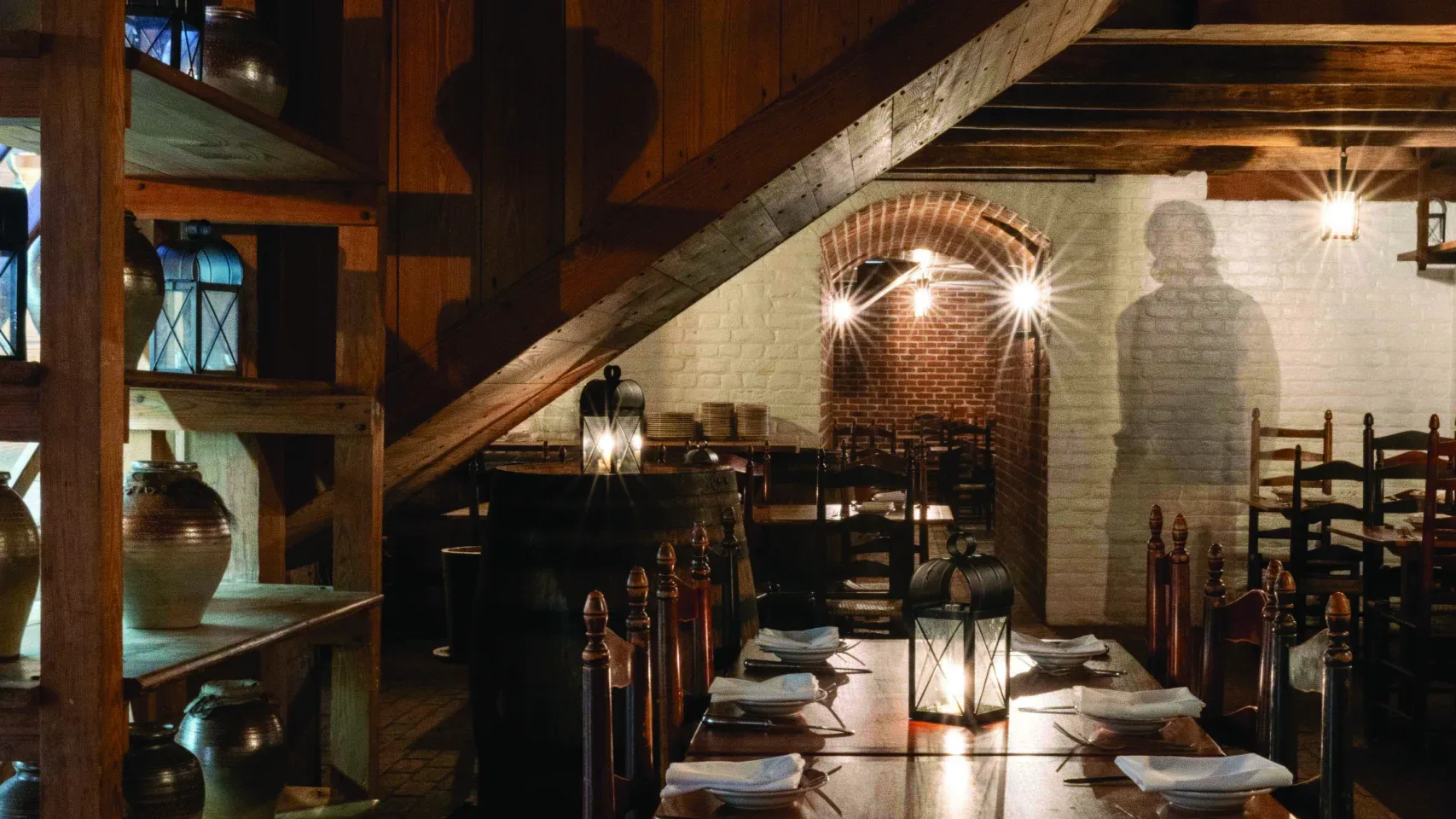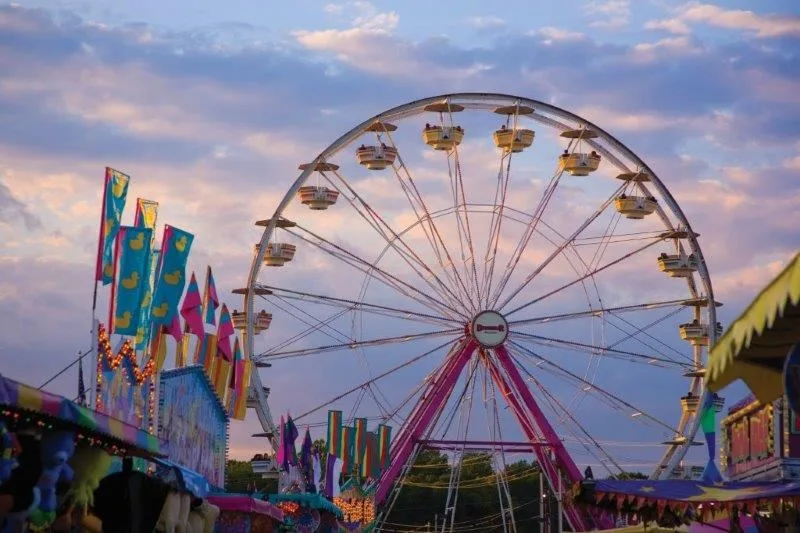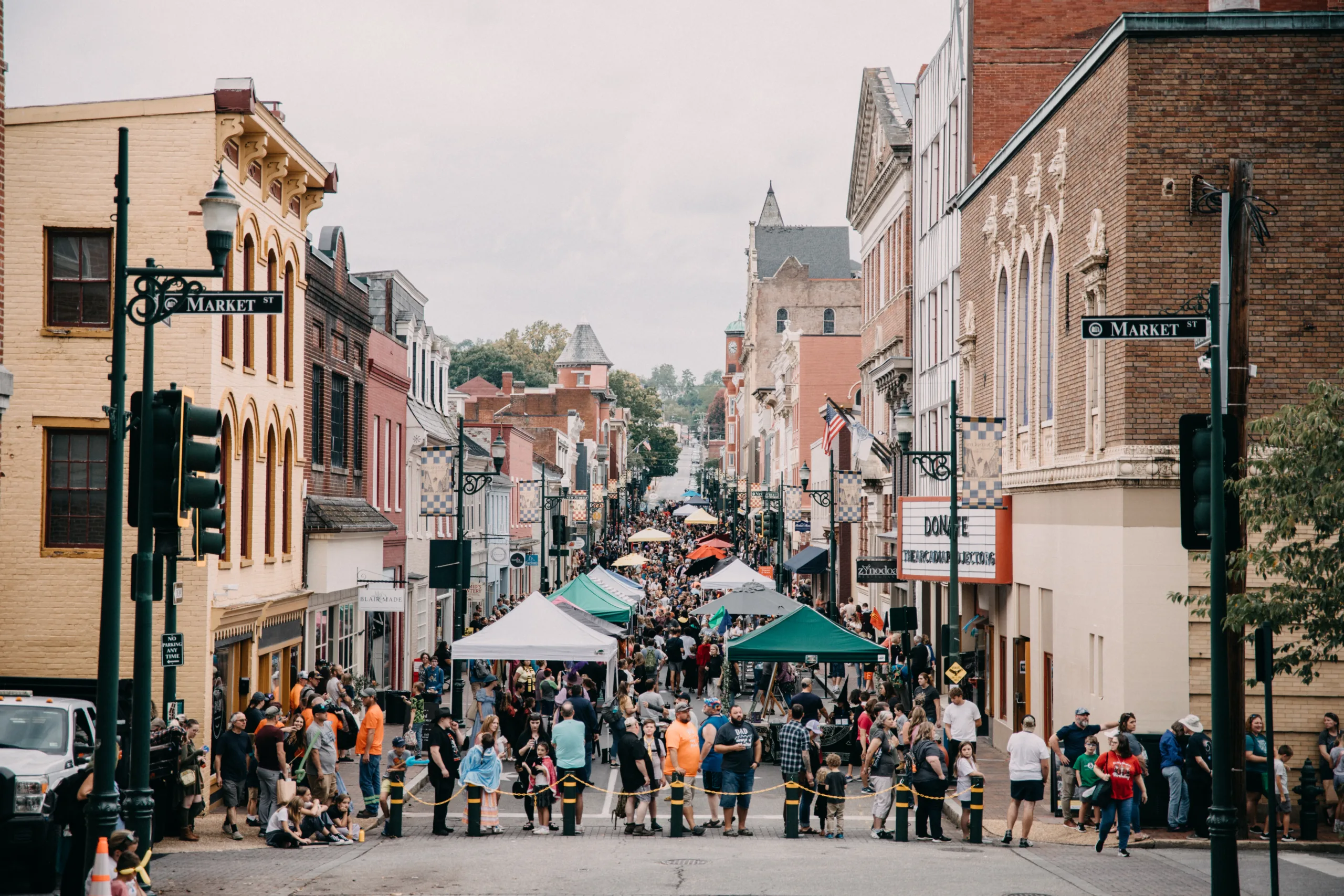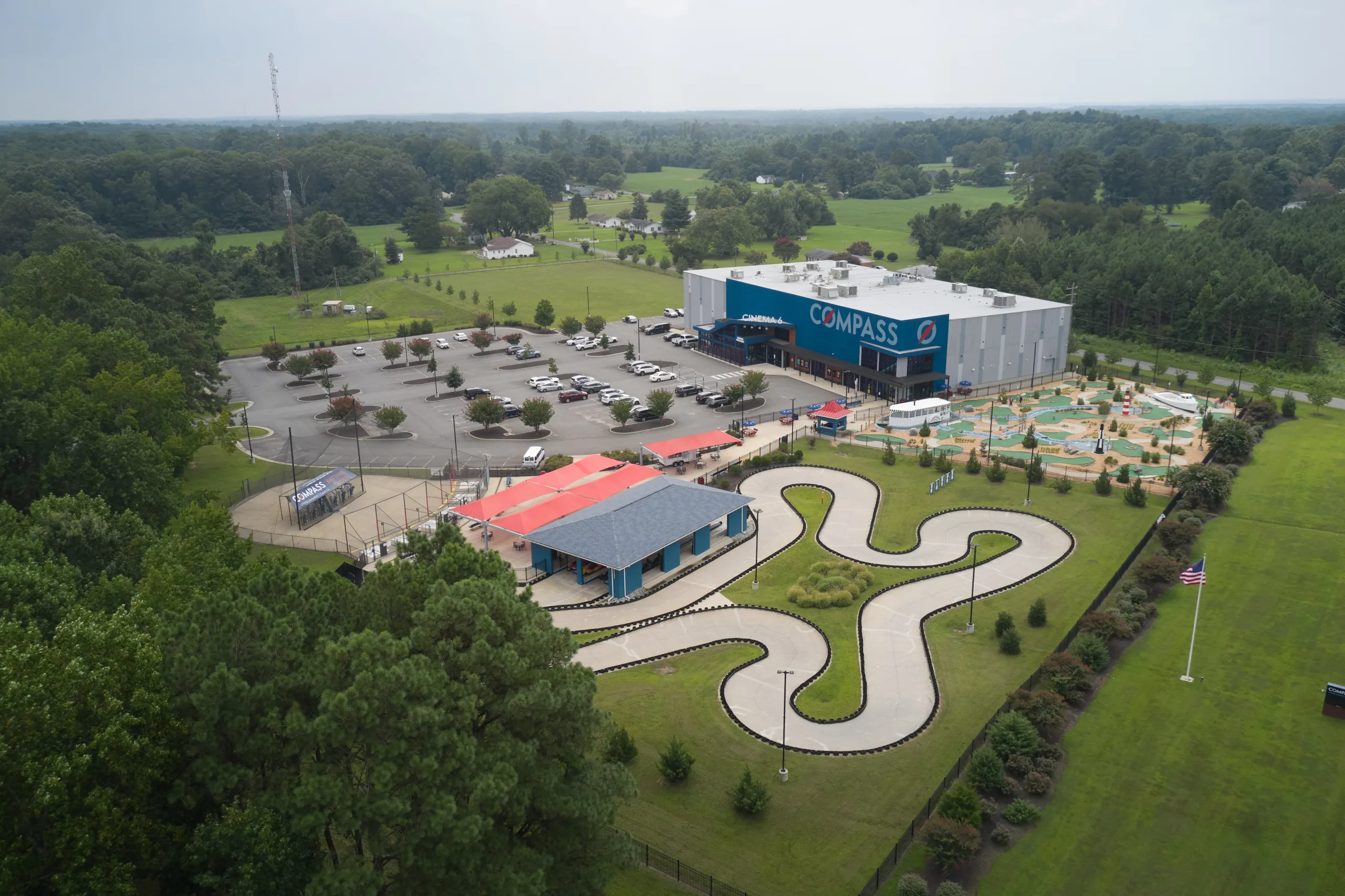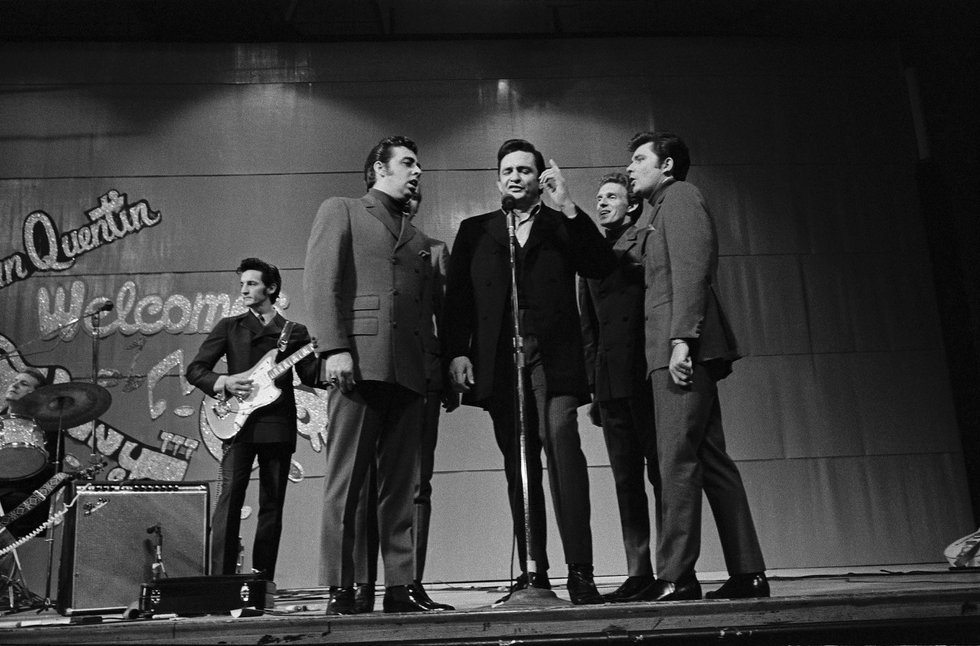The pendulum of the mind oscillates between sense and nonsense, not between right and wrong.
—Carl Jung
It may be the little diversion on a vacation that no one can resist. After we pad the waistline with fries and ice cream, we turn to the ghost tour in a haunted house. On the surface, of course, it’s all a lark, with frights and creepy stories. And yet there is something more to it. On some level, we harbor the hope that, if we could just see a ghost, at least once, then we would have the answers or reassurances we need to live life without wondering about mortality. Which cannot be said about a rollercoaster or a hot dog.
That was my mental loop one raw morning in April when I followed the percolating sounds of the cappuccino machine and met with my host, Greg Huff. An erstwhile history teacher, he and his wife Jennifer moved to Tappahannock for their next life adventure. They found it at the Essex Inn, which they purchased along with the 1710 Tavern across the street. Built in 1850, the mansion was fraught with enough family trauma to sustain a ghost or two over the dusty decades. Greg asked me how my night went in Elisabeth’s Room. And I had to admit—the room did feel haunted to me.
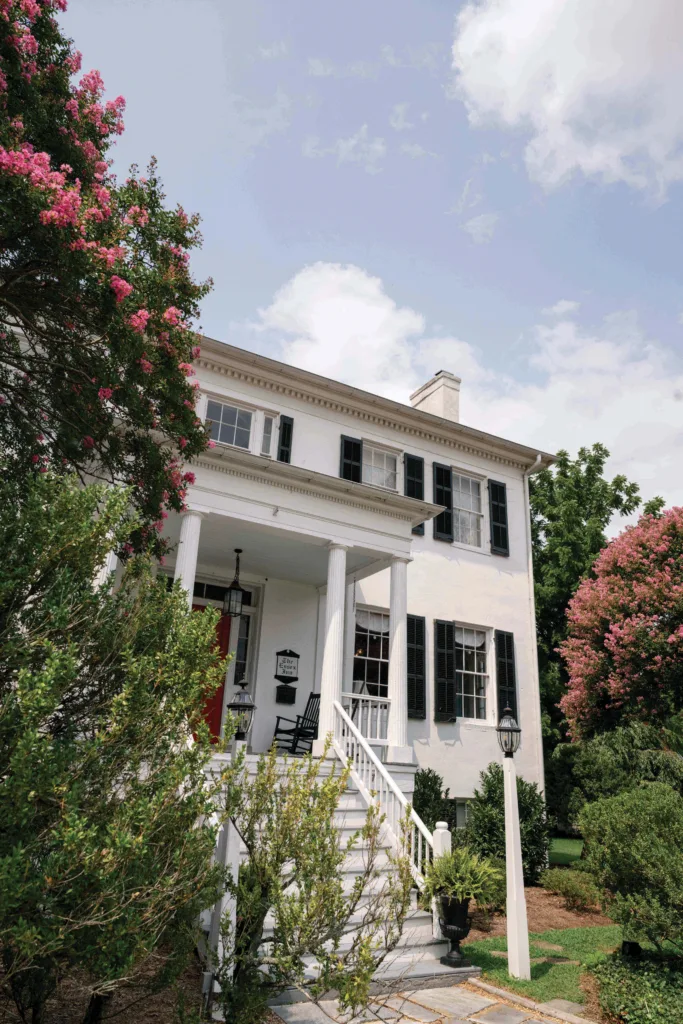
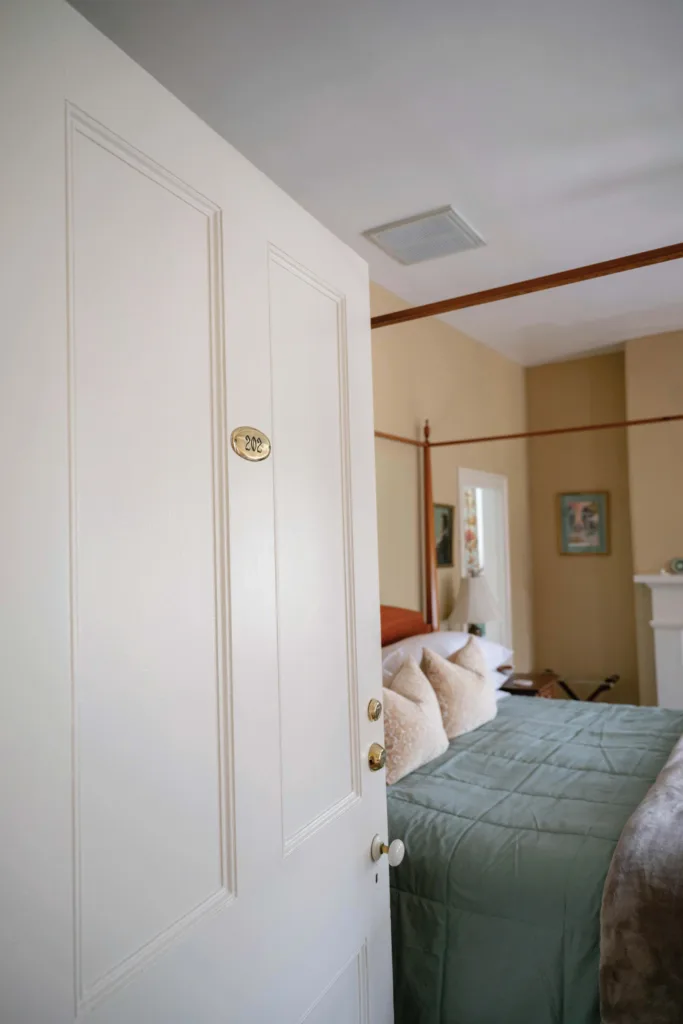
A view into Elisabeth’s Room at The Essex Inn where
a strong paranormal presence is often felt
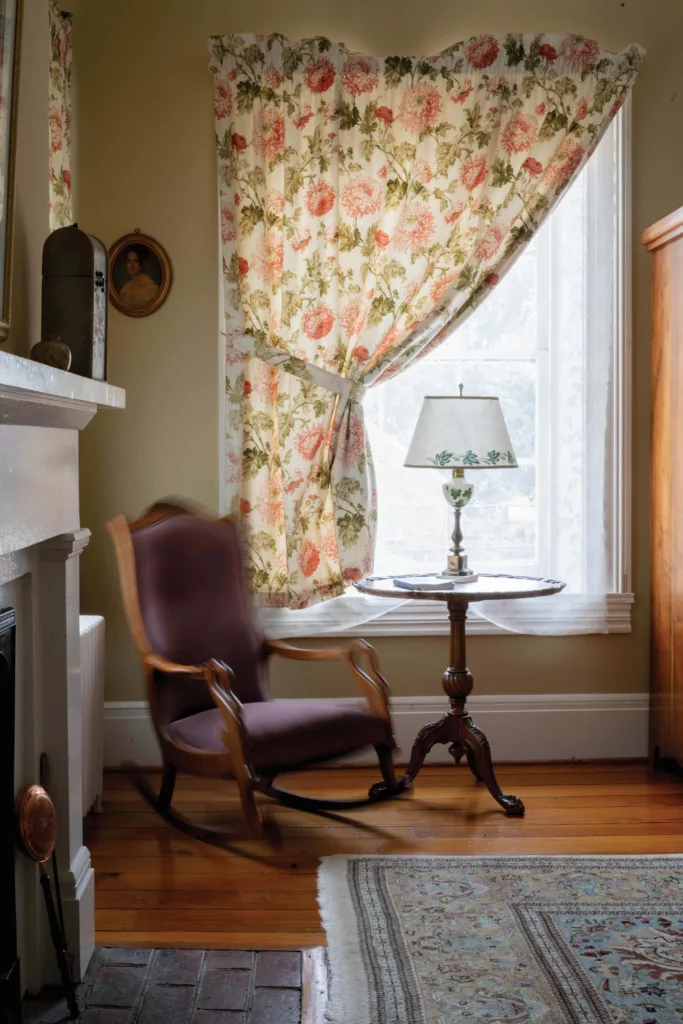
This chair in Elisabeth’s Room has been known to rock by
itself, which spooks housekeepers (and sometimes guests).
Stories That Refuse to Rest
The Huffs and other entrepreneurs are striving to grow tourism all throughout the Rappahannock River ambience, with small towns home to antique stores, waterways, and restaurants. Now that their beautiful inn and tavern have been restored, they find themselves sharing ghost stories with visitors. And to their amazement, they have a few of their own to share from their experience during the restoration of their buildings.
“I’m not a gray-area person,” Greg says. “I like things more decisive than that. But this is a real gray area for me. And since I’ve been here, I have had a real hard time reconciling things I cannot explain.”
He explains that rather than go bump in the night, objects move on their own. Sets of tools left in disarray reassemble in a particular pattern after the job site is closed for the day, as if a neat-freak of a ghost was sending a message to clean up. Even when it seems to be a prank, and the possible prankster is gone, they move. On many occasions, Greg and Jennifer will call to each other by playing a key on the baby grand. A few times, they have arrived from different floors, summoned by the piano, only to find that they didn’t play it—no one did. Even more disquieting, the housekeepers will not enter a certain bedroom because when they go in, the rocking chair by the window will begin to rock. That “certain bedroom”is the very room where I slept. My curiosity was natural: to inch up to the edge of the mystery, look into the limbo, and see what I could see.
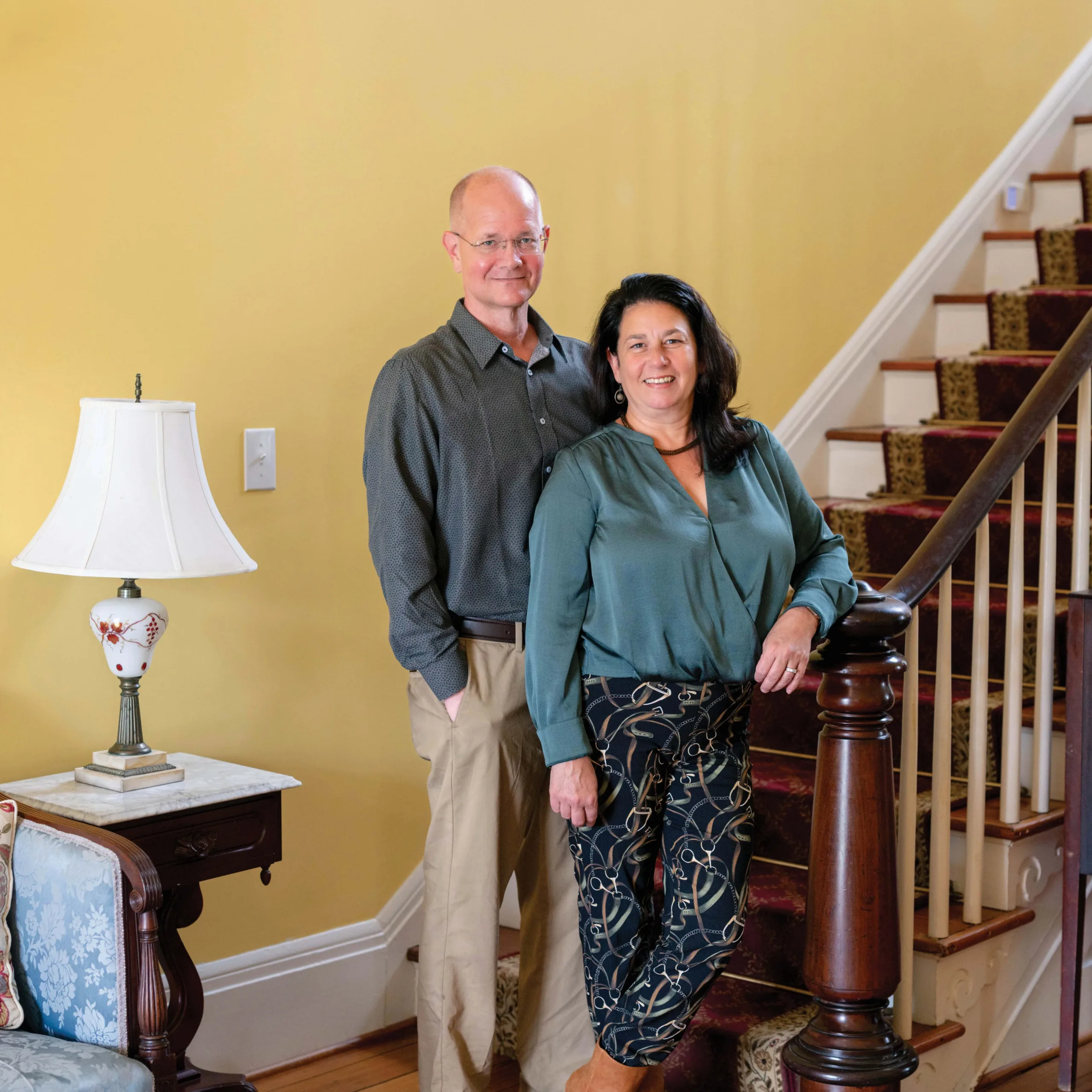
Why We Chase Shadows
We’re not alone. Every year, Virginia is host to millions who come to wander the battlefields, sequestered estates, and Colonial villages to enjoy the harvest of American history. Although no hard numbers come to hand, the Virginia Tourism Bureau reports that visitors can access at least 170 guided ghost tours, and likely many more. Prices can range from $25–150, depending on whether you go with a guide or opt for an overnight stay in a dwelling said to be haunted. Nothing is guaranteed, of course. How could it be? No one believes in ghosts, yet no one dares not believe. Those are the poles of uncertainty we find compelling most of our lives.
We all know the usual suspects behind a haunting: grief, loss, and/or projection of loneliness, airborne black mold, or some other ambient toxin. And this subjective yet universal experience has still another explanation.
Renowned psychiatrist Carl Jung wrote that we swing between the poles of sense and nonsense during the day, not right and wrong, and it seems to me this explains much about hauntings—that we find what we cannot explain and get fully engaged to make sense out of the mystery.
In my own case, my encounter was not in the least frightening. From the surrounding nonsense, the sense I came up with was that it felt as though my wife was lying beside me.
“It’s not scary or creepy,” Greg went on, referring to my experience and identical reports of other guests. “Everyone says it’s more reassuring.”
That was my take—not alarming, but reassuring. Like a ghost without the “g”—a host—someone who welcomes you. “You don’t sound very surprised by it,” said my wife later, when I told her about the haunting.
Ghost stories in Virginia’s haunted houses are like a big Southern family—they may all be individuals, but they share a family resemblance. Those features include slamming or opening doors, footsteps, and scarcely audible whispers saying things like, Get out! They also include flashing orbs that zip through the darkness, and semi-transparent shapes that walk without feet. People feel a hand on their back, or a push, trying to shove them down
the stairs.
The locations can trigger misleading impressions. Not every ruin is a haunted house; meanwhile, a pristine village like Colonial Williamsburg may be thoroughly haunted. The Blackburn Inn and Conference Center, located in Staunton, is gorgeous, but the reputation of its 20th-century incarnation, as the Western State Lunatic Asylum, conjures nightmares. Swannanoa is a fabulous Italianate mansion on Afton Mountain, and begs to be haunted.
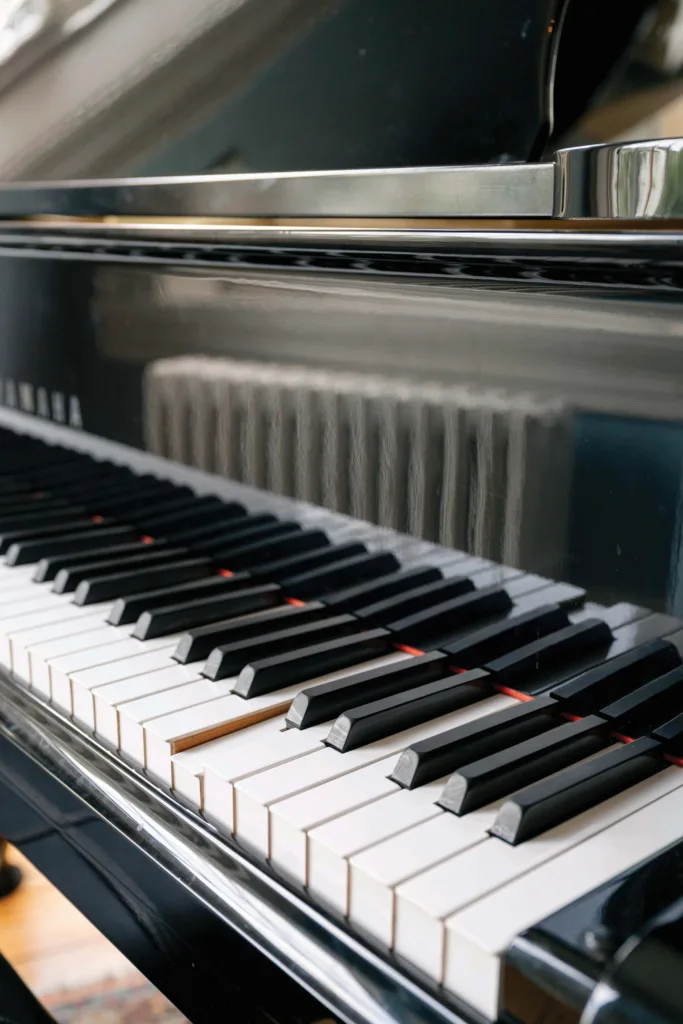
On more than one occasion, the baby grand piano in the parlor at The Essex Inn has played a key all on its own.
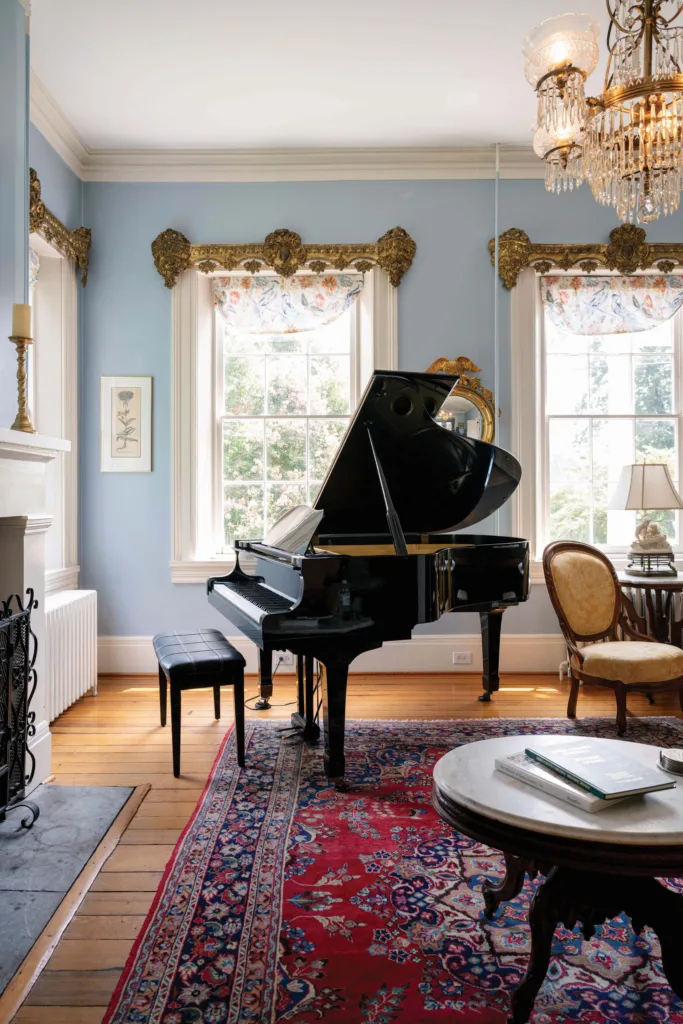
The Story Makes the Haunting
Whatever premonition we feel about a place, though, the most important requirement, bar none, is that a good haunting needs an equally good storyteller, or this falling tree will never be heard. And so, as we pass from the exterior to the interior, physically and mentally, we immerse ourselves in nonsense, try to make sense of it, and get out. An escape room comes to mind. With ghosts, our resourcefulness and cool temperament are not only being tested but steeled for more trying adventures ahead.
So the distinction between the supernatural and the unexplainable is in play. Your perspective affects everything. If you are hostile to the whole business of ghosts, so be it. But that, too, can change.
“It’s really the perspective of the self-proclaimed skeptic that I take more seriously,” says Holt Saulsgiver, the grounds and office manager of Historic Tuckahoe in Richmond, known, in part, for having been Thomas Jefferson’s childhood home. She herself has had a handful of encounters in 20 years.
“One of our primary tour guides for 15–20 years was the biggest humbug,” Holt recalls. “She would say, ‘I don’t know why you guys do these Halloween tours, I don’t know what you’re talking about. You fill people’s heads with nonsense.’ But in 2015, in the middle of a Christmas tour, we were in a very Christmassy spirit. People came to the house for candle-light tours, carols and such. And the tour guide sees someone in a room that was roped off. She goes into the room and says, ‘Oh, hey, the tour is actually this way, can you come back with me?’ Then she sees the person walk through a wall and disappear.”
Saulsgiver says, “I have to take her seriously on that ‘cause I’ve known her before and after that happened. I saw her that evening. She was down in the kitchen. She had a quilt over her shoulders; she was cold; she couldn’t get warm. And that is consistent. Everyone who has had direct interaction or close proximity to one of our ghosts here—that is a consistent feature of their feedback, they just go ice cold.”
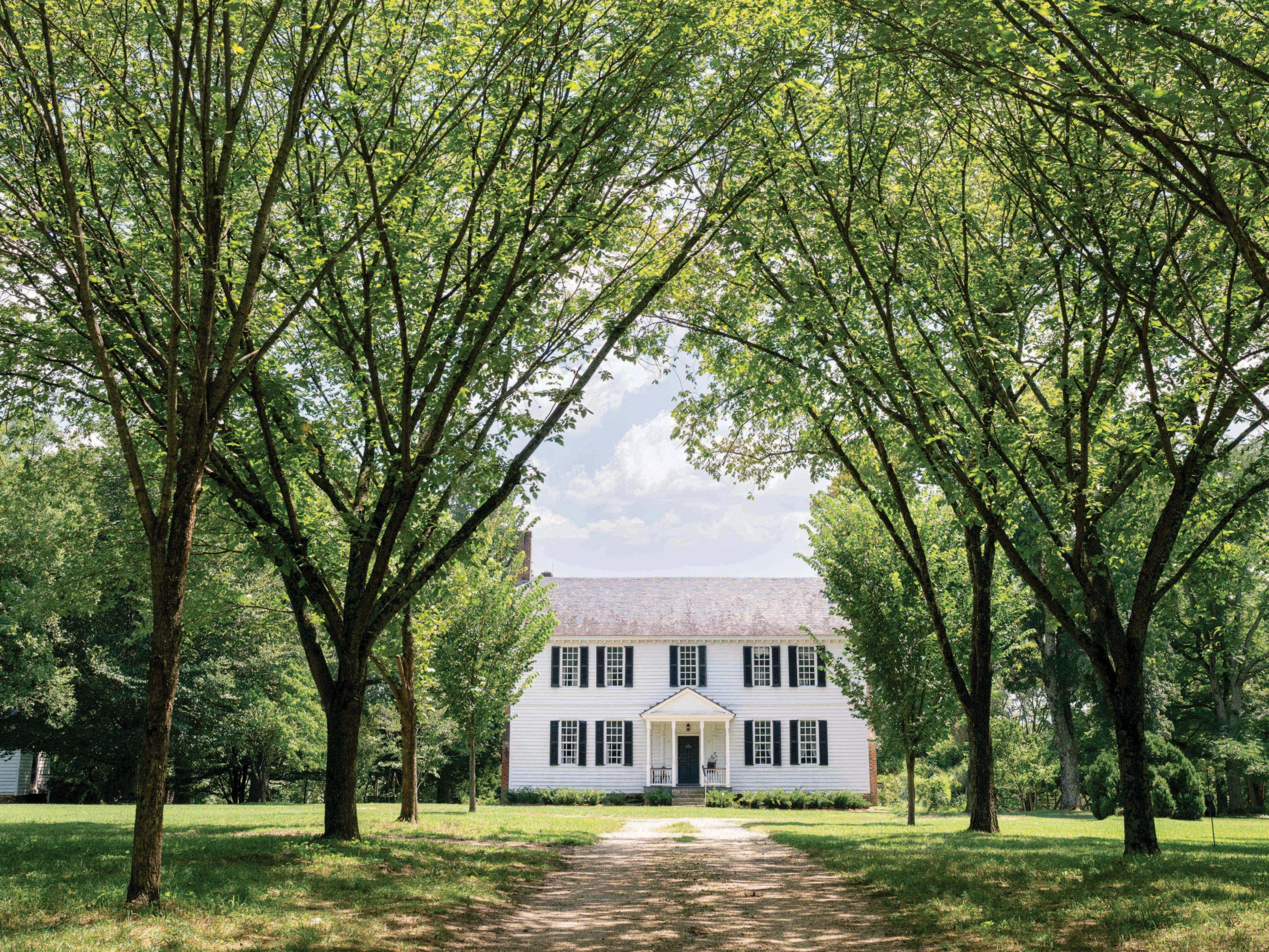
The Ghost Walk & Midnight Parties
Historic Tuckahoe is chock full of more stories of the supernatural. It’s famous boxwood walk earned its nickname “The Ghost Walk” for good reason. Giant American boxwoods flank the long pathway where The Grey Lady eternally paces—believed to be Mary Randolph, who dared love beneath her station. Her powerful family dragged her back from New England and forced her into marriage with a clergyman. She went mad. Visitors spot her wandering the path, features blurred, manner heartbreakingly sad, accompanied by phantom children’s laughter when no children are present.
The ghosts at Tuckahoe aren’t particularly shy. When owners Sue and Tad Thompson moved in, Sue jolted awake to music, clinking glasses, and party chatter downstairs. “Do you hear that?” she whispered to her husband. “Yes, I do.” As they crept toward the stairs, silence fell. The main room stood empty—the party had vanished.
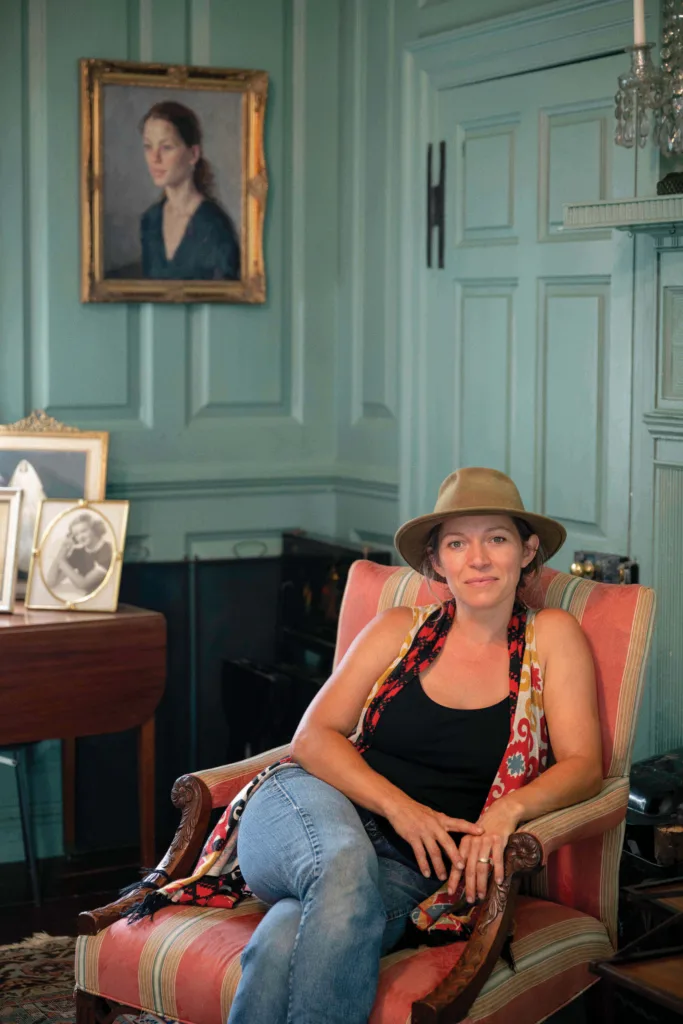
Holt Saulsgiver, ground and office manager at Historic Tuckahoe, in the room where a tour guide witnessed a ghost disapperar through a wall.
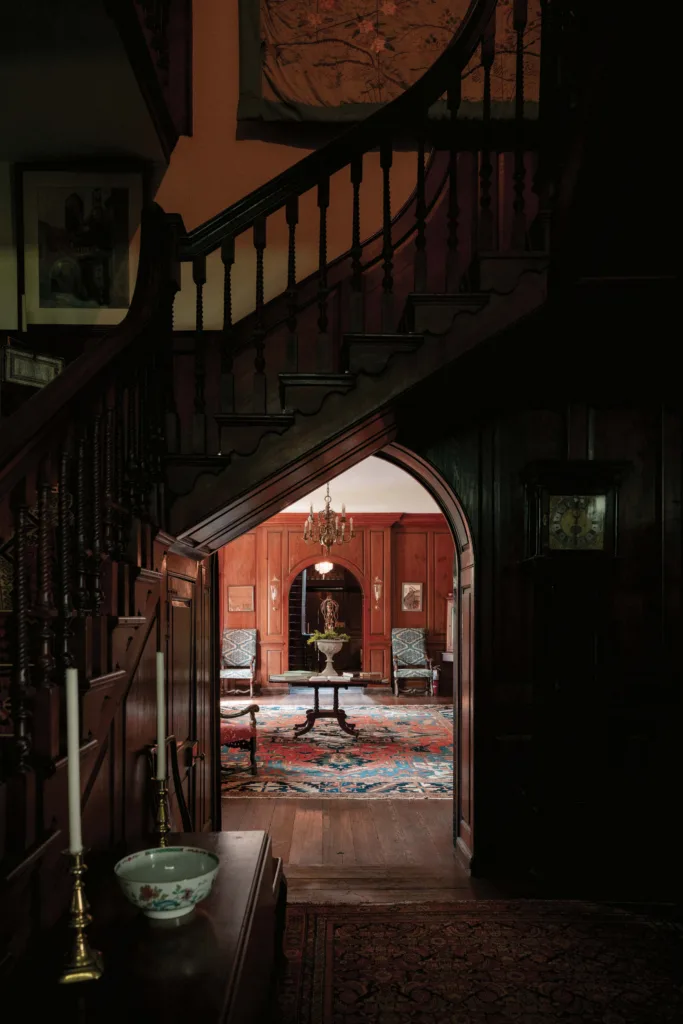
The black walnut-paneled north stair hall and entryway and a view to the Great Hall at Historic Tuckahoe
The Ones We Live With
“Haunted houses are real and imagined,” says Dr. Kelly Brennan, official historian for the Colonial Williamsburg Foundation, as we stroll a bright path in the Colonial village. . “When you go on a haunted house tour, you’re going to get the designed experience right on cue. But in real haunted houses, there’s no guarantee.” That’s the “difference between the ones we manufacture, and the ones we live with. You don’t always have to monetize real haunted houses; it becomes lore. Kids love that word.” The lore, she explains, is historical context. The ghost stories, she says, make it easier for reluctant students in a tour group to take in the history. In her tenure, she has had encounters, including a spirit that mimicked her.
Brennan had just started a tour with 45 people when her colleagues went into the Shields Tavern, where they put together an Ouija board—something she doesn’t mess with. They asked if any spirit wanted to talk to them—“knowing the spirit they believe haunts the tavern is the daughter of the first owner who cut her out of his will,” Brennan explains. “So they ask, ‘What is your name?’ And on the Ouija board they spell out F-R-A-N—then bang!”
The front door opened and slammed shut, and they saw someone walking away quickly. They knew, right away, who it was. Brennan says, “They thought it was me. I have a very distinct footstep. They thought I was furious ‘cause I had walked away from my [tour] group. So my boss runs down the stairs—she said it was like chasing footsteps through the building. She gets to the place where the person should have been standing, but no one is there. She yells in fright. And Lindsey yells down, ‘You’ve got to come up here!’ She comes up the stairs and all she says is, ‘Look!’ She points out the window. And there I am across the street with 45 people.”
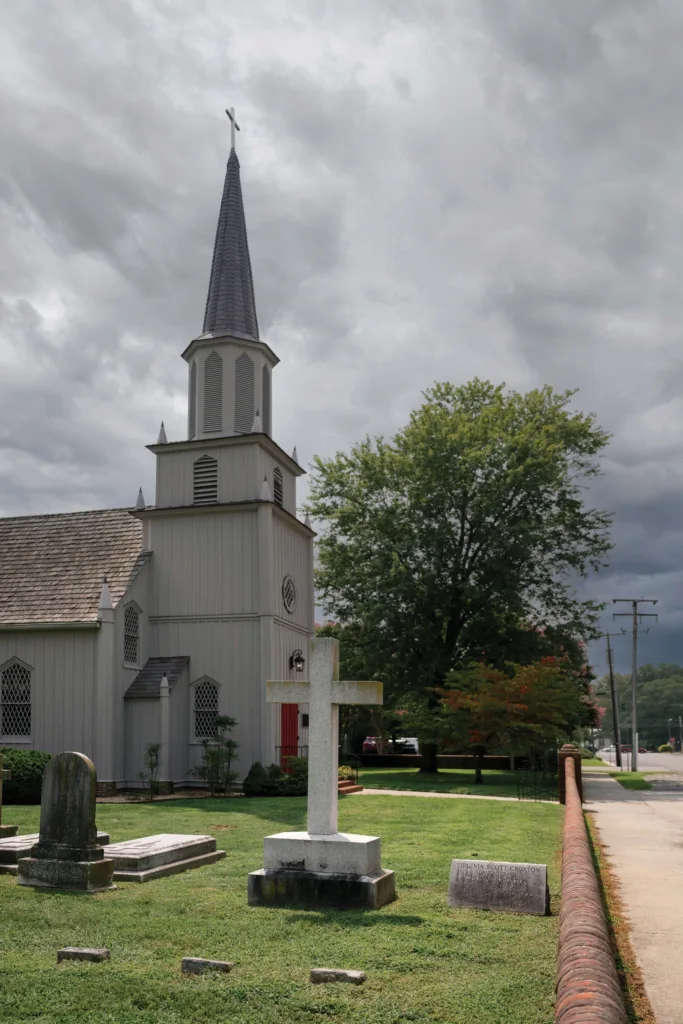
Graveyard across the street from The Essex Inn, where Virginia Croxton, the woman believed to haunt the inn, rests.
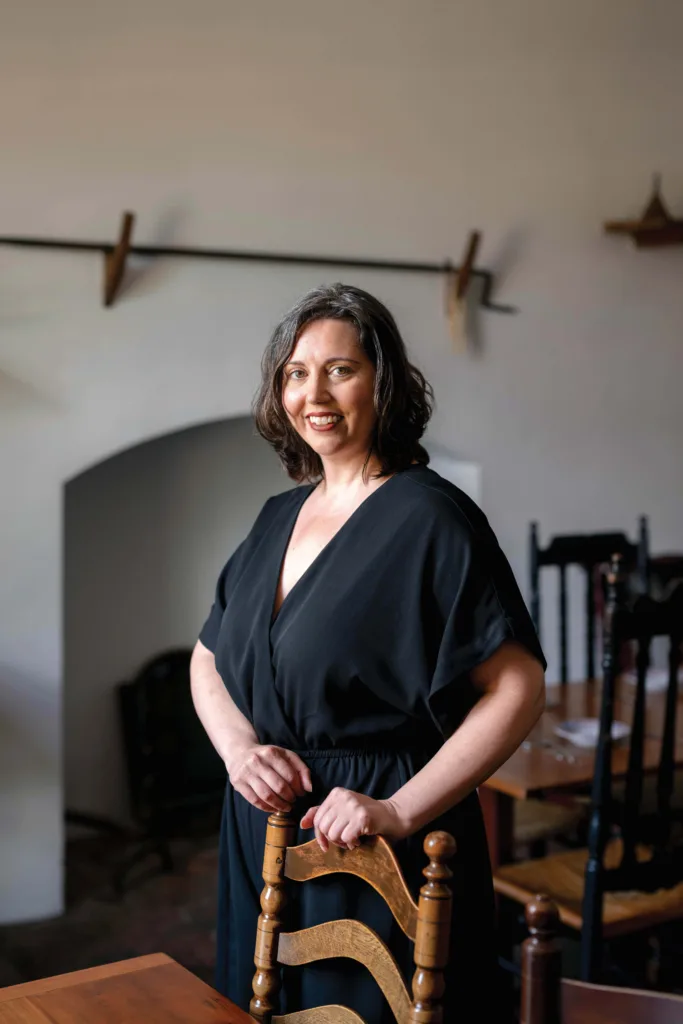
Dr. Kelly Brennan, Colonial
Williamsburg Foundation’s
official historian, in the dining
room at Shields Tavern
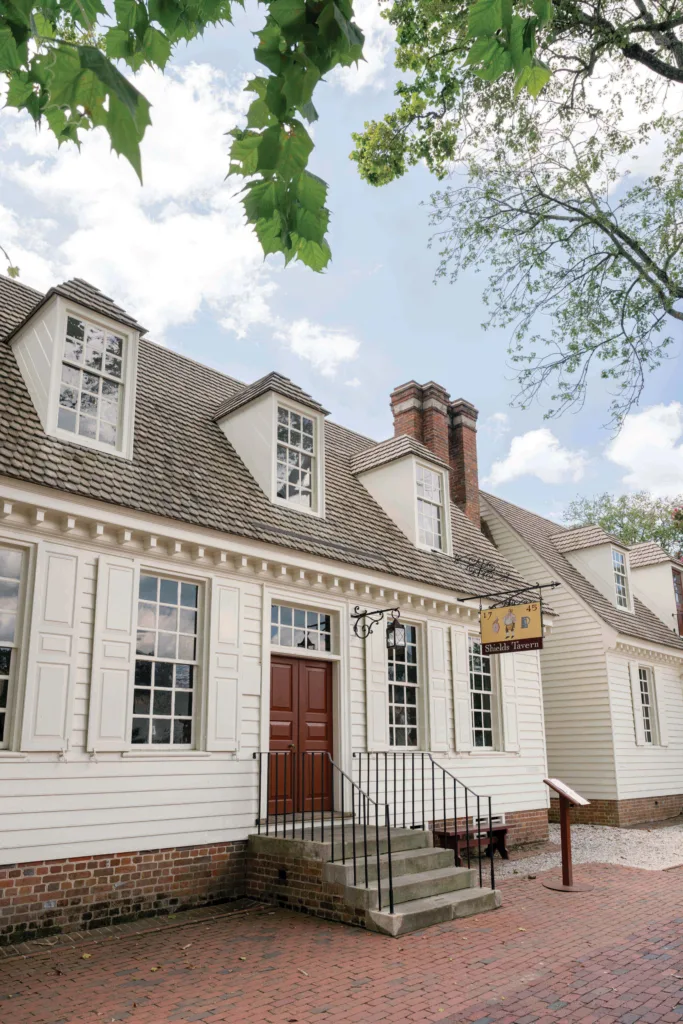
The entrance to Shields Tavern in Colonial Williamsburg faces Duke of Gloucester Street.
Traces in the Wind
If a haunting is anything, it is dynamic. Like describing the wind, it is only visible in its effect. And it depends on whether you bring it with you. It might be a phantom limb experience—feeling the pain of something that is no longer present. It might be a desire to give voice to the voiceless, or to speak out for the victims of inhumane treatment. It might just be a vision triggered by exposure to black mold. A human shape might be formed by the humanizing of random sensory details in the mind. Whatever it is, the experience has been mapped for millennia and is thought by scholars to be our earliest religious experiences in the form of ancestor worship. If we allow that our mental gyroscopes oscillate from sense to nonsense, then a haunting might just arise from the dizzying swing of our
mental pendulum.
We all come from somewhere else, and yet we all wind up here at the ghost tour. It’s a laugh and a lark, and during the show, we harbor the secret hope that we might see a ghost just once. Then we will know and believe. And that will give us enough peace of mind for years. Maybe.
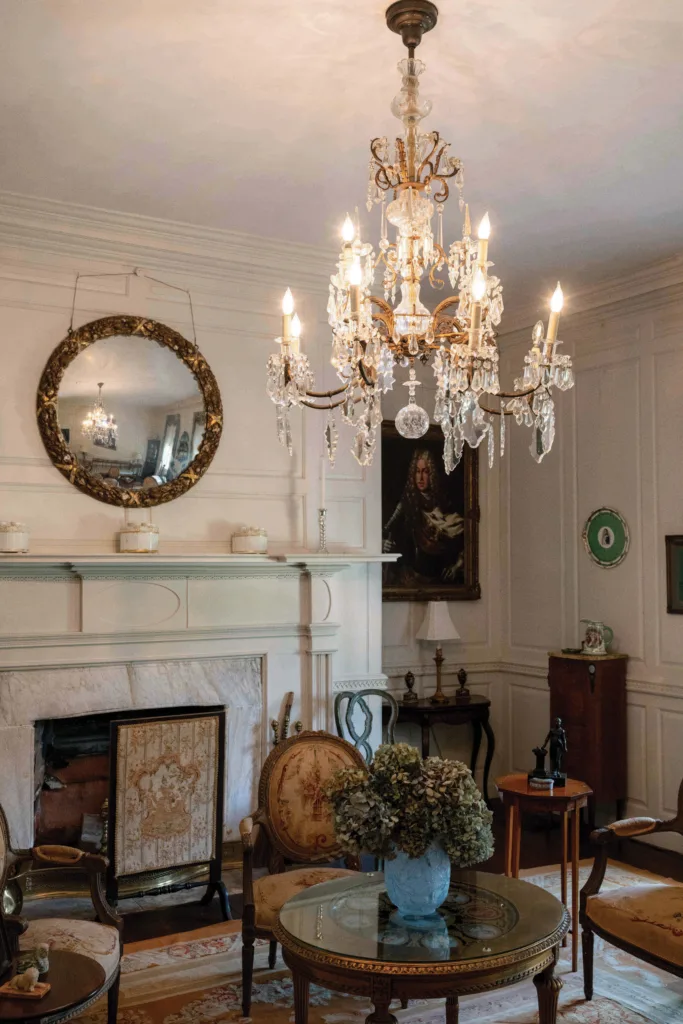
The chandelier at Historic Tuckahoe
has been seen spinning on its own.
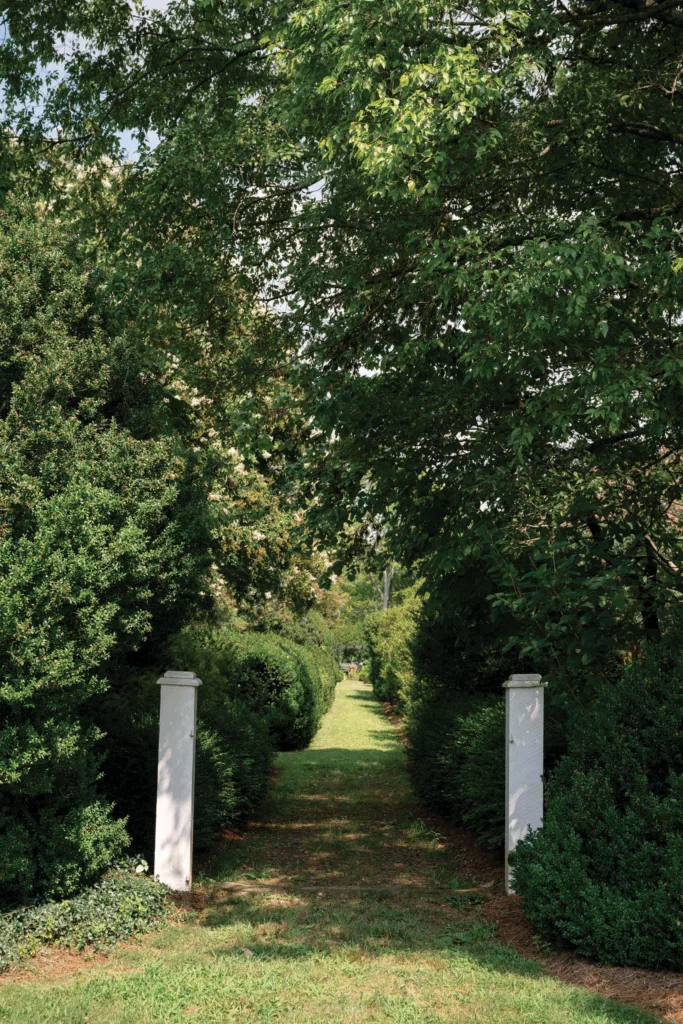
Columns mark the entrance into Historic Tuckahoe’s boxwood Ghost Walk, where The Grey Lady occasionally paces.
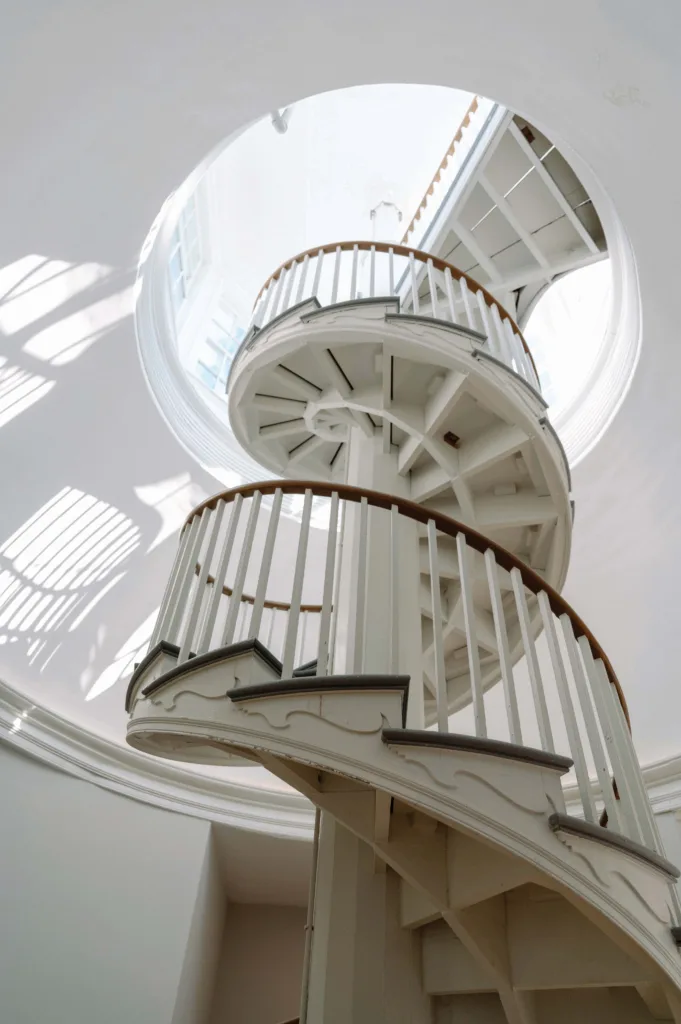
In Staunton, the Blackburn Inn was formerly the Western Lunatic Asylum that dates to the early 19th century. An iconic spiral staircase is said to be a metaphor for the psychologica healing process—its ascending spirals representing the gradual unwinding of mental distress that doctors hoped to achieve.
A Night in Elisabeth’s Room
“We don’t bring it up unless someone …” Jennifer Huff paused in our phone call. As one of the co-owners of The Essex Inn in Tappahannock, she was excited to talk about hauntings, yet wanted to be measured. “We don’t advertise it—that you can have an encounter—but there are definitely people who are interested in that.”
One quiet week later, I drove two hours east to sleep in a haunted bedroom—Elisabeth’s Room—in the restored bed and breakfast. Built in 1850 on the corner of Water Lane and Duke Street, the inn enjoys an oblique view of the Rappahannock River and an elderly graveyard. My expectation was that nothing would happen, though of course I hoped it might.
Sometime late in the night, someone slid her leg beside mine under the sheets. Sleepy, but with my eyes now open, I knew I had dreamed that movement. Minutes later, it happened again—this time, it was unmistakable that a leg slid alongside my leg. I lifted my head off the pillow. Was I awake? I rolled out of bed. Street lamps cast an orange mist into the second-story room. I eased back into bed and rolled on my side.
Again, her leg brushed mine. Then I sensed her shift, swing her legs off the bed, stand, and return. She laid beside me and slid her leg next to mine, as if we were a married couple.
The next morning, I met Greg Huff, the co-owner, in the kitchen. He smiled. “Well? Anything happen?”
“Uh, well, yeah. It felt like my wife was stretching her leg out …”
Greg jumped in. “A lot of people tell us they can feel someone in the bed. They get out of bed, then they get back in. It happens in that room.”
Now, I hadn’t said anything about someone getting in or out of the bed to Greg. The fact that he had anticipated that part of the story was a shock as well as a validation. After all, how often do you share a dream with strangers? I stood there wordless; he said he knew who it might be.
Promptly, we headed back upstairs—not to my room, Elisabeth’s Room, but to Lal’s Room next to it. He drew back the curtain in the corner room. The wavy glass, original to the house, was amazing by itself.
“Here,” he said. “Can you see them? It’s a little hard to see them.” Indeed, more than hard to see, they proved impossible to photograph.
Two delicate signatures appeared to hover on the surface of the glass, like floating filaments. Two little girls had etched them in the 1870s, perhaps using a diamond ring, and they are the visual equivalent of some whispers across time—don’t forget me. One signature belonged to Alice Gresham, reputed to have been jilted at the altar. The other was Virginia Scott Croxton, who never married and lived out her 80 years in the mansion. Born in 1859, she died in 1939, the year Gone with the Wind premiered. A black-and-white photo from 1939 shows the mansion looking rough—in a state we might think of as haunted. She died in the room where I stayed.
In the churchyard, I located her headstone there in the family plot. Hers stands beside her father’s monument, facing the mansion and the room where I had slept—perhaps with her beside me.
This article originally appeared in the October 2025 issue.
